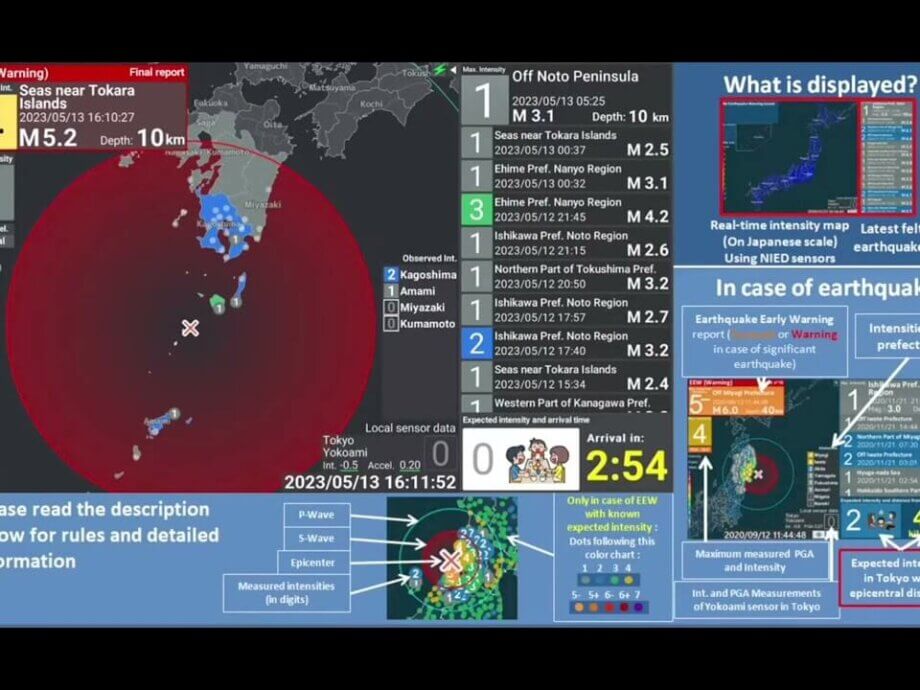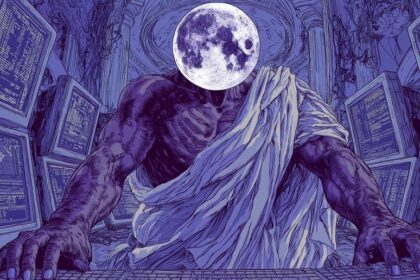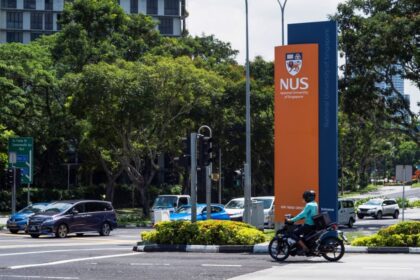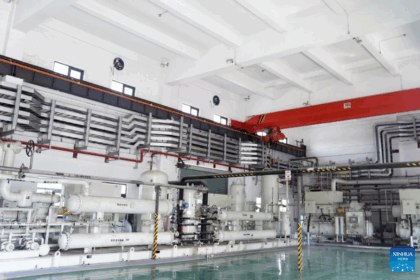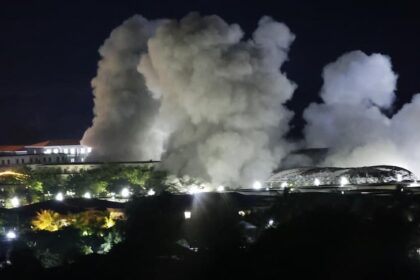Unprecedented Seismic Activity and a Viral Prophecy: What’s Happening in Japan?
Japan, a nation long accustomed to living with the threat of natural disasters, is once again in the global spotlight. In recent weeks, a swarm of earthquakes around the remote Tokara Islands and the eruption of Mount Shinmoe in Kyushu have reignited public anxiety. But this time, the fear is not only about the tremors themselves—it’s also about a viral prophecy from a manga artist, Ryo Tatsuki, whose work is widely believed to have foretold the 2011 Tohoku earthquake and tsunami. Her latest prediction, warning of a major disaster striking Japan in early July 2025, has sent ripples through society, the travel industry, and even international markets.
- Unprecedented Seismic Activity and a Viral Prophecy: What’s Happening in Japan?
- Seismic Swarm and Volcanic Eruption: The Facts
- The Manga That Shook a Nation: Ryo Tatsuki and ‘The Future I Saw’
- How the Prophecy Went Viral: Social Media, Superstition, and Public Anxiety
- Tourism Takes a Hit: Economic and Social Consequences
- Science vs. Superstition: Can Earthquakes Be Predicted?
- Disaster Preparedness: Japan’s Response and Resilience
- The Power of Media and the Persistence of Belief
- In Summary
As tremors continue and volcanic ash falls, the Japanese public and international observers are left to grapple with the intersection of science, superstition, and the power of viral media. This article explores the facts behind the seismic events, the origins and impact of the manga prophecy, the response from scientists and officials, and the broader implications for Japanese society and its neighbors.
Seismic Swarm and Volcanic Eruption: The Facts
Over the past week, more than 330 tremors have rattled the Tokara Islands, a remote chain lying between the southern tip of Kyushu and the Okinawa islands. The seismic unrest included a magnitude-5 earthquake and has coincided with a string of smaller quakes felt in southern Kyushu. At the same time, the Japan Meteorological Agency (JMA) raised the alert level on Mount Shinmoe—a volcano in central Kyushu—to level three on its five-tier scale after it erupted for the first time in seven years, sending a 500-meter plume of ash into the air. Ashfall has been reported in surrounding areas, and officials have warned that pyroclastic flows and flying rocks could reach up to 2 kilometers from the crater.
While the timing of these events has unsettled many, seismologists emphasize that such earthquake swarms and volcanic eruptions are not unprecedented in this region. Fumiaki Tomita, assistant professor at Tohoku University’s Research Centre for the Prediction of Earthquakes and Volcanic Eruptions, explains:
“The sort of earthquake swarms that we see happening off southern Kyushu happen occasionally and we have seen similar seismic events in 2021 and again in 2023. This is not uncommon.”
Tomita also notes that the relationship between the Tokara swarm and Mount Shinmoe’s eruption remains unclear, cautioning against reading too much into the timing. The JMA continues to monitor the situation closely, but stresses that there is no scientific basis for linking these events to any specific prophecy or prediction.
The Manga That Shook a Nation: Ryo Tatsuki and ‘The Future I Saw’
The current wave of anxiety is not solely due to natural phenomena. At its heart lies a manga—Watashi ga Mita Mirai (“The Future I Saw”)—by Ryo Tatsuki, a retired comic artist who claims to have recorded prophetic dreams for decades. First published in 1999, the manga gained cult status after readers noticed a cryptic note on its cover: “March 2011, Great Disaster.” When the devastating Tohoku earthquake and tsunami struck in March 2011, killing over 18,000 people and triggering the Fukushima nuclear disaster, many interpreted Tatsuki’s note as a chilling prediction come true.
In 2021, a new edition of the manga was released, containing additional material and a new, specific warning: a major disaster would strike Japan on July 5, 2025. Tatsuki’s dream described “boiling seas,” “giant bubbles,” and a tsunami three times the height of the 2011 waves, possibly triggered by an underwater volcanic eruption south of Japan. The impact zone, according to her vision, would include Japan, Taiwan, Indonesia, and the Northern Mariana Islands.
While Tatsuki frames her manga as a dream diary rather than a psychic prediction, the apparent accuracy of her 2011 note has given her new warning a veneer of credibility among believers. The manga has sold over a million copies, and its influence has spread far beyond Japan, especially in Hong Kong, Taiwan, and other parts of Asia.
How the Prophecy Went Viral: Social Media, Superstition, and Public Anxiety
The spread of Tatsuki’s prophecy has been supercharged by social media. Platforms like YouTube, TikTok, and Weibo are awash with dramatic countdown videos, “hidden warning” breakdowns, and influencer commentary. The hashtag “Manga-Japan-Earthquake” has garnered tens of millions of views. In Hong Kong, the manga became a bestseller, and travel agencies reported an 83% drop in bookings to Japan for late June and early July. Airlines such as Greater Bay Airlines and Hong Kong Airlines have reduced or suspended flights, citing low demand driven by fear of the predicted disaster.
Adding to the anxiety are parallel predictions from feng shui masters and psychics, such as Hong Kong’s Master Seven, who warned of increased natural disasters in the “Year of the Wood Snake” and advised against travel to Japan and South Korea. These warnings, amplified by celebrities and business leaders, have gained traction in a region where spiritual beliefs and disaster preparedness are deeply intertwined.
Psychologists point to phenomena like confirmation bias and the Forer (or Barnum) effect, where vague statements feel personally meaningful and reinforce existing fears. In East Asia, where superstition and spiritual practices are part of daily life, such predictions can have outsized real-world effects—even when contradicted by science.
Tourism Takes a Hit: Economic and Social Consequences
The impact of the manga prophecy is not limited to online chatter. The Japanese tourism industry, which has been booming since the end of the COVID-19 pandemic, is now facing a sharp, if temporary, downturn. According to Bloomberg Intelligence and ForwardKeys data, bookings from Hong Kong to Japan fell by 50% year-on-year, with some periods seeing drops as steep as 83%. Travel agencies in Hong Kong, Taiwan, and South Korea report significant declines in demand, especially for trips scheduled around early July.
Airlines have responded by cutting flights, and some travel agencies have shifted their focus to alternative destinations. The effect is particularly pronounced in regions with strong cultural ties to Japan and a history of travel for tourism, business, and family visits. Despite these declines, overall tourism to Japan remains robust, with a record 3.9 million foreign visitors in April 2025, buoyed by a weak yen and pent-up demand.
Japanese officials and tourism boards have attempted to reassure travelers. Yoshihiro Murai, governor of Miyagi Prefecture—one of the areas hardest hit by the 2011 disaster—urged people not to take the rumors seriously, warning that the unfounded story was starting to affect tourism. The Japan Meteorological Agency has repeatedly stated that there is no scientific basis for predicting earthquakes by date, time, or place.
Science vs. Superstition: Can Earthquakes Be Predicted?
Japan sits atop the Pacific “Ring of Fire,” a region of intense tectonic activity that makes it one of the most earthquake-prone countries in the world. The country experiences hundreds of tremors each year, and major quakes are a recurring feature of its history. The 2011 Tohoku earthquake and tsunami remain seared into the national consciousness, and government task forces regularly update risk assessments for future megaquakes.
In February 2025, a Japanese government task force warned that there is an 80% chance of a magnitude-9 earthquake occurring in the Nankai Trough off Japan’s Pacific coast within the next 30 years. Such a quake could trigger tsunamis up to 30 meters high and cause catastrophic damage. However, scientists are unanimous in their view that it is impossible to predict the exact timing, location, or magnitude of earthquakes with current technology.
Ryoichi Nomura, director general of the Japan Meteorological Agency, addressed the issue directly on social media:
“Current levels of scientific expertise do not allow precise earthquake prediction in terms of timing, location and scale. Accordingly, any such predictions should be considered unreliable.”
In a subsequent press briefing, he added:
“It is regrettable that people are being affected by baseless information in this age of modern science.”
Despite these reassurances, many members of the public remain anxious. Online comments reflect a mix of skepticism and belief, with some arguing that science should not dismiss prophecies outright, especially given the apparent accuracy of Tatsuki’s 2011 note. Others acknowledge that while precognitive dreams are not scientifically proven, they cannot be completely denied.
Disaster Preparedness: Japan’s Response and Resilience
Japan’s experience with natural disasters has made it a world leader in disaster preparedness and mitigation. After the 2011 Tohoku disaster, the country invested in massive coastal defense projects, including a 400-kilometer-long tsunami wall designed to reduce the force of waves and delay inland flooding. The Shinkansen (bullet train) system is equipped with advanced earthquake detection and response technology, capable of slowing or stopping trains before tremors are felt. Public education campaigns, regular drills, and robust emergency response systems are part of daily life.
General preparedness information is regularly circulated by Japanese authorities, not in response to specific threats, but as part of a long-standing culture of readiness. Ryo Tatsuki herself has encouraged people to use the heightened awareness as an opportunity to review evacuation routes and stockpile supplies, but cautions against panic or overreaction.
As one travel industry expert noted, the real lesson may be the need for responsible reporting and critical thinking in the face of sensational predictions. While preparedness is always wise, panic based on unverified prophecies can have real economic and social consequences.
The Power of Media and the Persistence of Belief
The viral spread of Tatsuki’s manga prophecy highlights the enduring power of media—both traditional and social—to shape public perception and behavior. In an age where information (and misinformation) can travel instantly across borders, even a work of fiction can have tangible effects on economies, travel patterns, and collective psychology.
Experts point out that the combination of cultural beliefs, recent traumatic events, and the amplification effect of social media creates fertile ground for such phenomena. In East Asia, where spiritual practices and disaster preparedness coexist, the line between caution and superstition can be thin. The case of Ryo Tatsuki’s manga is a vivid example of how stories—true or not—can move markets and influence millions.
In Summary
- Japan has experienced a recent swarm of earthquakes and a volcanic eruption, but scientists say these are not unprecedented and are not linked to any prophecy.
- A viral manga by Ryo Tatsuki, “The Future I Saw,” has fueled public anxiety with its prediction of a major disaster in July 2025, echoing her earlier note that seemed to foreshadow the 2011 Tohoku earthquake.
- The prophecy has gone viral across Asia, leading to a sharp drop in travel bookings to Japan, especially from Hong Kong, Taiwan, and South Korea.
- Japanese officials and scientists stress that there is no scientific basis for predicting earthquakes by date, time, or place, and urge the public to rely on verified information.
- Japan remains a global leader in disaster preparedness, with advanced infrastructure and public education designed to mitigate the impact of natural disasters.
- The episode underscores the power of media and superstition to influence behavior, and the importance of critical thinking and responsible communication in the face of sensational predictions.


